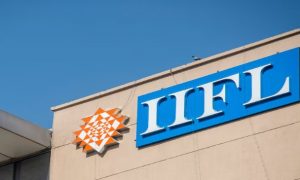Interest rates do not seem to have a material bearing on people who buy their dream residential properties on borrowed funds as the home loan outstanding of banks almost doubled to Rs 16.85 lakh crore in the last five years, shows Reserve Bank data.
Interest rates do not seem to have a material bearing on people who buy their dream residential properties on borrowed funds as the home loan outstanding of banks almost doubled to Rs 16.85 lakh crore in the last five years, shows Reserve Bank data.
Even in the first five months of the current fiscal, home loan outstanding of banks has clocked double-digit growth, despite the Reserve Bank raising the key interest rate thrice during this period by a whopping 140 basis points (bps), which led to a hike in the home loan rate.
Another hike in repo rate was effected in September by 50 bps.
As per the RBI data, the housing loan outstanding of the banks was at Rs 8,60,086 crore at the end of fiscal 2016-17, and the same has increased to Rs 16,84,424 crore at the end of 2021-22.
Experts from banking and real estate industry are of the opinion that though interest rates are important, they do not deter a home buyer as the decision is based on current income and future prospects.
Also people are becoming increasingly aware that interest rates would move up and down during the life cycle of a loan, which is typically for around 15 years.
Commenting on the banks’ rising loan portfolio, H T Solanki, General Manager ? Mortgages and Other Retail Assets at Bank of Baroda, said affordability is an important factor since home buying typically takes place on borrowed funds.
“However, home loans are also a long-duration product and customers do expect changes in interest rates during the tenure of the loan. Further, the average pay increases in the range of 8-12 per cent in the country also help to mitigate the impact of a rate increase to a certain extent,” he said.
The RBI data revealed that banks’ housing loan outstanding increased in the range of 13.7 to 16.4 per cent year-on-year in each of the first five month of the current financial year.
The outstanding at end-August 2022, has risen to Rs 17.85 lakh crore.
On the rising interest rates, HDFC Managing Director Renu Sud Karnad said: “I don’t think interest rate hike will have a material impact on demand for home loans”.
The senior banker noted that a house purchase unlike other products is planned after a lot of due diligence within the family.
Housing loans carry a floating interest rate and unlike a car or a consumer durable loan, they are long-term generally for 12 to 15 years, she said.
“And hence increase in interest rates have a relatively less impact on the cash flow. Usually 2 to 3 interest rate cycles play out during the loan timeframe of 12 to 15 years. So borrowers understand that interest rates may also come down during such a long tenure of loan,” Sud explained.
Country’s largest mortgage lender HDFC is in the process of merging with HDFC Bank.
Both Karnad and Solanki, as well as realtors said demand for housing continues to be healthy and sales of residential properties are witnessing strong revival in the last 12-15 months.
Property consultant JLL India’s chief economist Samantak Das said from March 2016, the home loan interest rate was on a declining trend from an average of 9.45 per cent to 6.95 per cent till April 2022.
This was in sync with the RBI policy rate (repo) which was on a downward trajectory from 6.25 per cent in March 2017 to 4 per cent in March 2022.
Noting that the RBI has raised the repo rate by 190 basis points in the current fiscal, Das said the transmission to the home loan interest rate is to the extent of 140-150 bps taking the mortgage rate to about 8.85 per cent.
“However, home sales are still robust and may touch a decadal high by the end of 2022. This may be attributable to the strong festive demand coupled with stable pricing and relatively lower home loan interest rate compared to the peak of 10-11 per cent witnessed 8-10 years back,” he said.
Das, however, cautioned that the continuous rise in home loan interest rates and EMI may act as a sentiment disruptor.
Recently, property consultant Anarock, which is one of the leading housing brokerage firms, reported that housing sales rose 87 per cent in January-September across seven cities to 2,72,709 units and breached the transactions clocked in the entire 2019 pre-COVID year.
The consultant tracks primary sales of seven major cities — Delhi-NCR, Mumbai Metropolitan Region (MMR), Chennai, Kolkata, Bengaluru, Hyderabad and Pune.
Sales stood at 1,45,651 units in the January-September period of 2021.
The January-September figure of this calendar year is higher than the 2,61,358 units sold during the entire 2019.
Sales of residential properties plunged to 1,38,344 units in 2020 due to the adverse impact of the COVID-19 induced lockdowns.
India’s primary housing market revived last year on pent up demand and sales rose to 2,36,516 units in 2021. The strong momentum has continued till September this year.
Realtors are hoping that sales momentum will continue despite the rise in mortgage rates. Property experts are banking on pent up and festive demand to sail through.





































